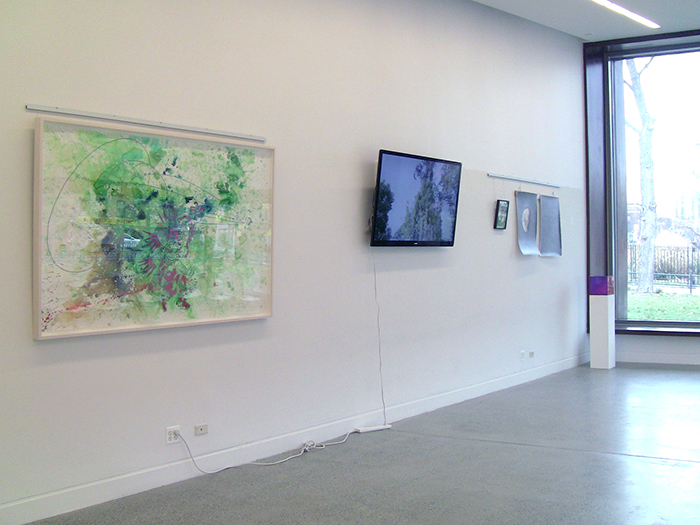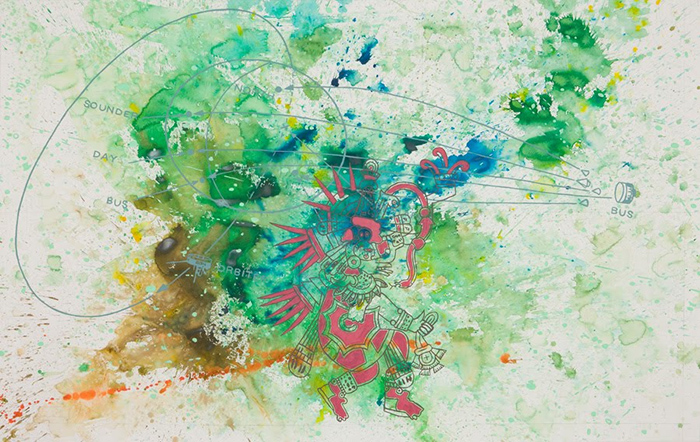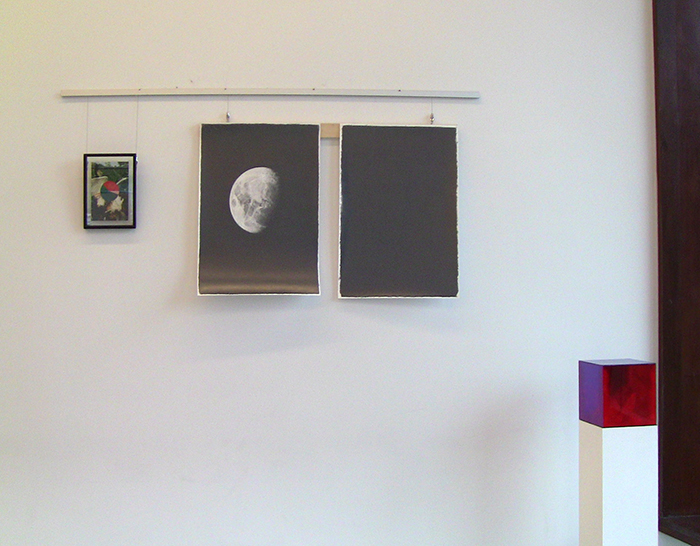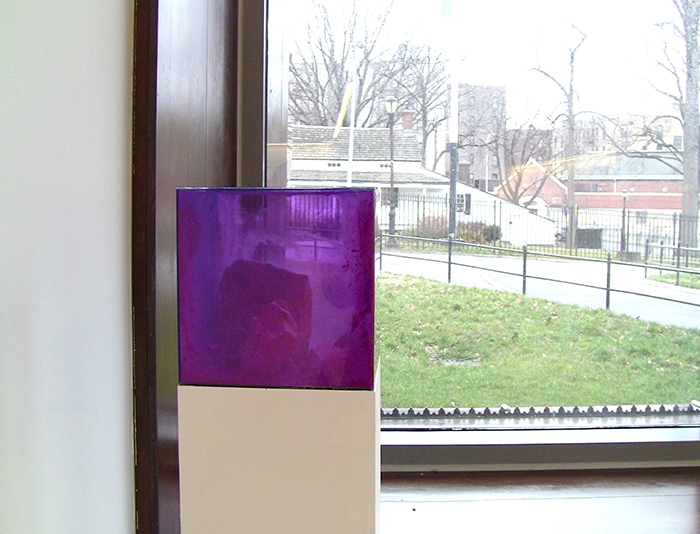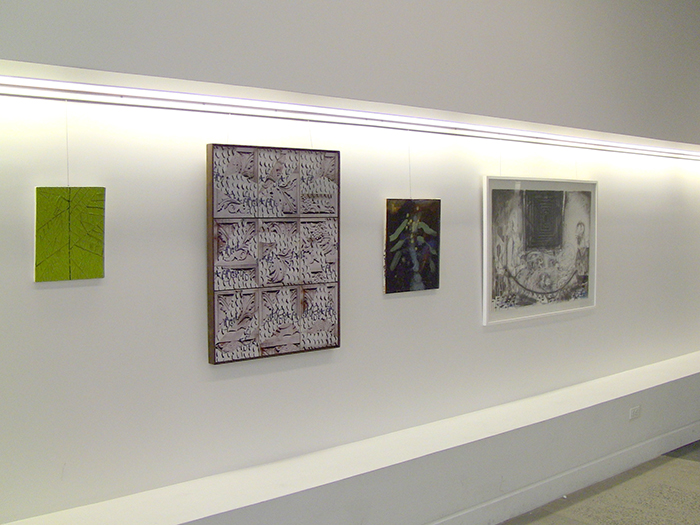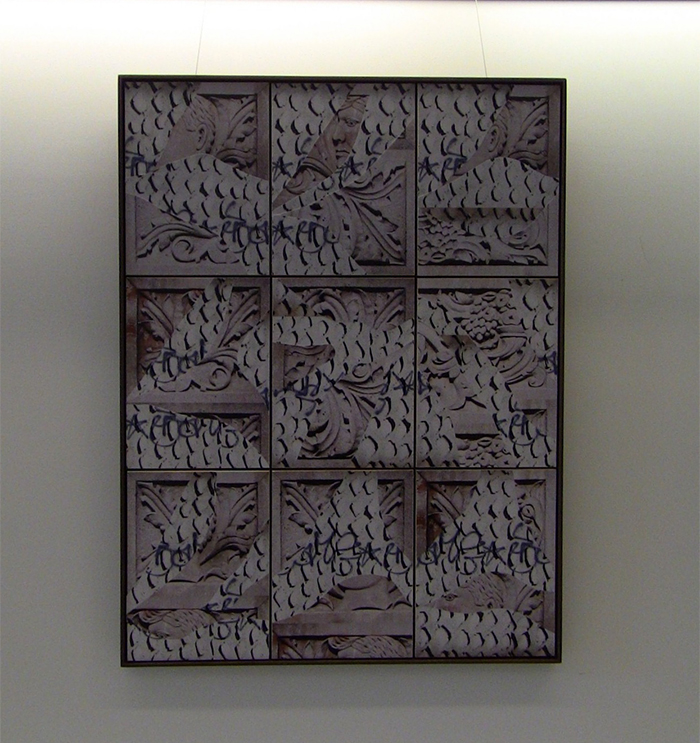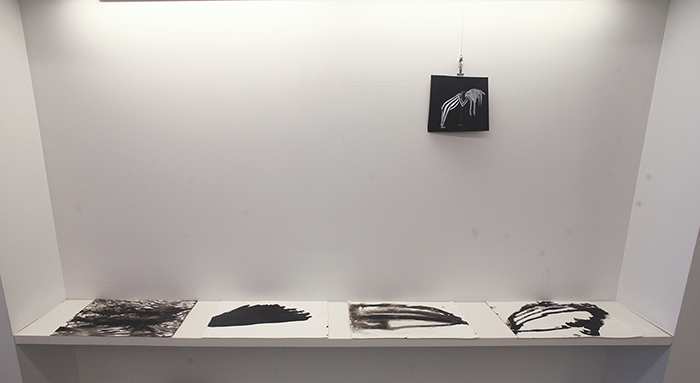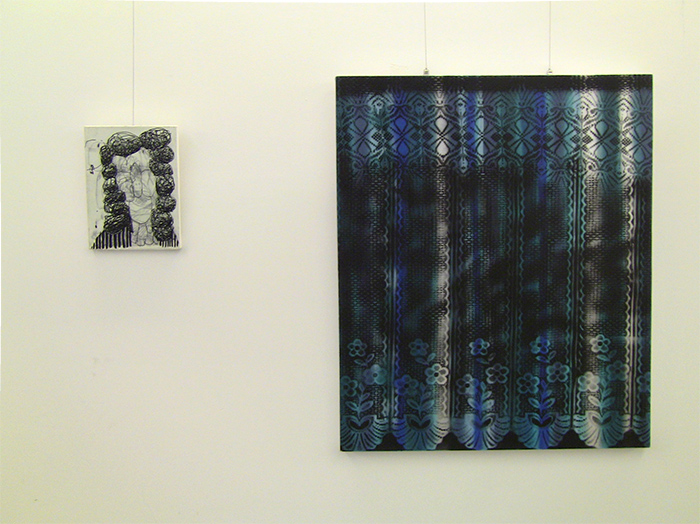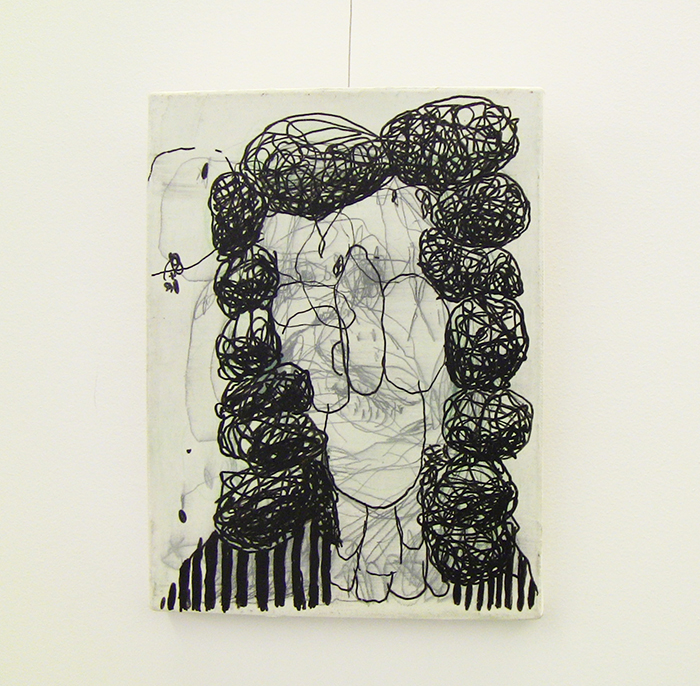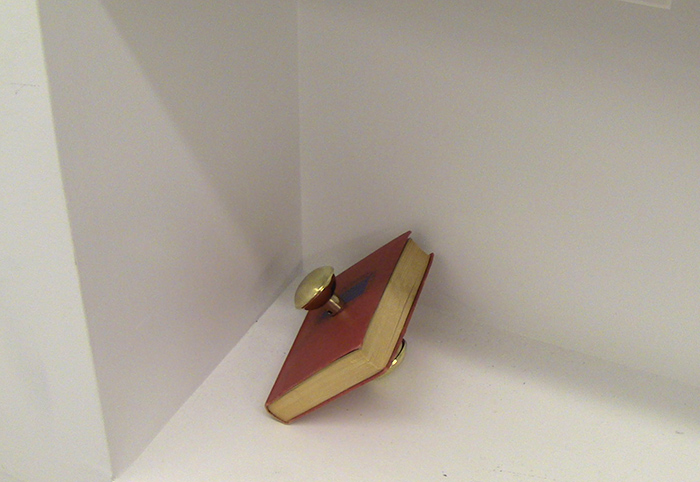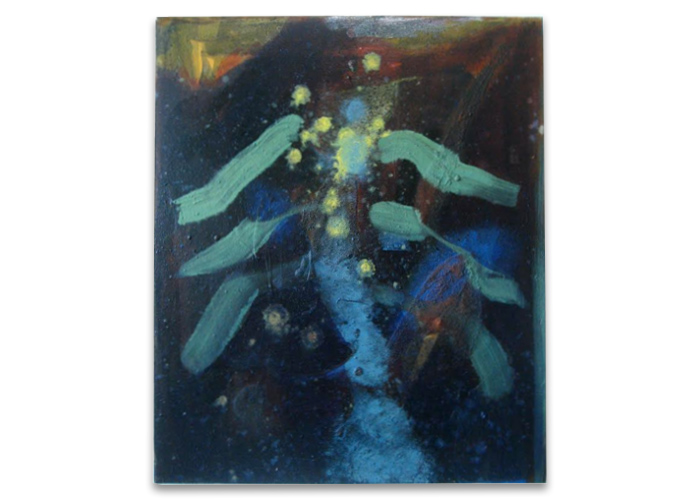SWAMP
Edgar Allan Poe Park Visitor Center Gallery
City of New York Parks and Recreation
2640 Grand Concourse
Bronx, NY 10458
December 19, 2012 – January 18, 2013
Bhakti Baxter
Jesse Bransford
Benjamin Butler
Marthe Ramm Fortun
Tamara Gonzales
Scott Hug
Juliet Jacobson
Jose Lerma
Lauren Luloff
David Matorin
Max Razdow
Sigga Björg Sigurðardóttir
Ryan Wallace
Max Warsh
Curated by Kari Adelaide
By the gray woods,| — by the swamp…| Shrouded forms that stop and sigh | As they pass the wanderer by…
-Edgar Allan Poe, Dream-Land
The metaphor of the swamp, as a liminal space, leads to an uncanny admixture of renewal and abandonment: half earth, half water. Swamp engages with modes of perception and the natural world; the included artists investigate a delicate balance between visual imagination, illusion and actual environment, with powerful visionary investigations of becoming. The concept of transformation and illusion allows for phenomenological inquiry, and by drawing upon environmental sources, ideas of embodiment emerge, with themes of fluidity, and the traces of memory, consciousness, and sight/seeing. The exhibition also conjures the context of New York City’s bygone swamps, such as the Bronx’s erstwhile Bear Swamp, as well as Central Park’s present-day bodies of water, once created by damming the natural seepage of the swamp. The exhibition brings to light Frederick Law Olmsted’s vision, in the Greensward Plan that created Central Park, of “Undignified tricks of disguise” which emphasized the illusion of extended space, seemingly natural but man-made. Olmsted’s vision of land rearrangement led to acts of significant changes of appearance, structure and natural conditions: swamps were drained and cleared and 20,800 pounds of gunpowder were used to loosen rock.
The diverse range of work reflects interior and exterior flux, where the natural world is observed and translated as a space for embodiment and vision. The artists’ work negotiates boundaries between physical landscape and human consciousness. Like a swamp in transition, reflections seep beyond physical boundaries to the realm of memory and consciousness, where boundaries are unreliable and uncontained: water and land masses endlessly shift and transition. Water acts as a catalyst for (and image of) transition and uncertainty: nothing is fixed, including one’s gaze and reflection within it. In the words of Emerson, “Shadows in still water, and the like, if too eagerly hunted, become shows merely, and mock us with their unreality.” The work evokes questions about the relationship between ever-changing landscapes and interiority, mapping a corporeal relationship between inner and outer realms, the past and present, reality and unreality, visual form and sensation. As Maurice Merleau-Ponty writes “The world is all around me, not in front of me…No more is it a question of speaking of space and light; the question is to make space and light, which are there, speak to us.” Like New York City’s historical and phantom swampy spaces, a delicate balance of remembering and creating exists in order to weave a present-day mythology of the natural world, as the idiosyncratic imagination attempts to trace the unannounced yet omnipresent rhythms that surround us.
Image courtesy of Lauren Luloff, Dark Flower, 2012.
